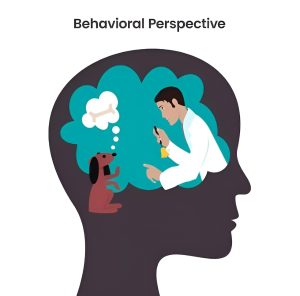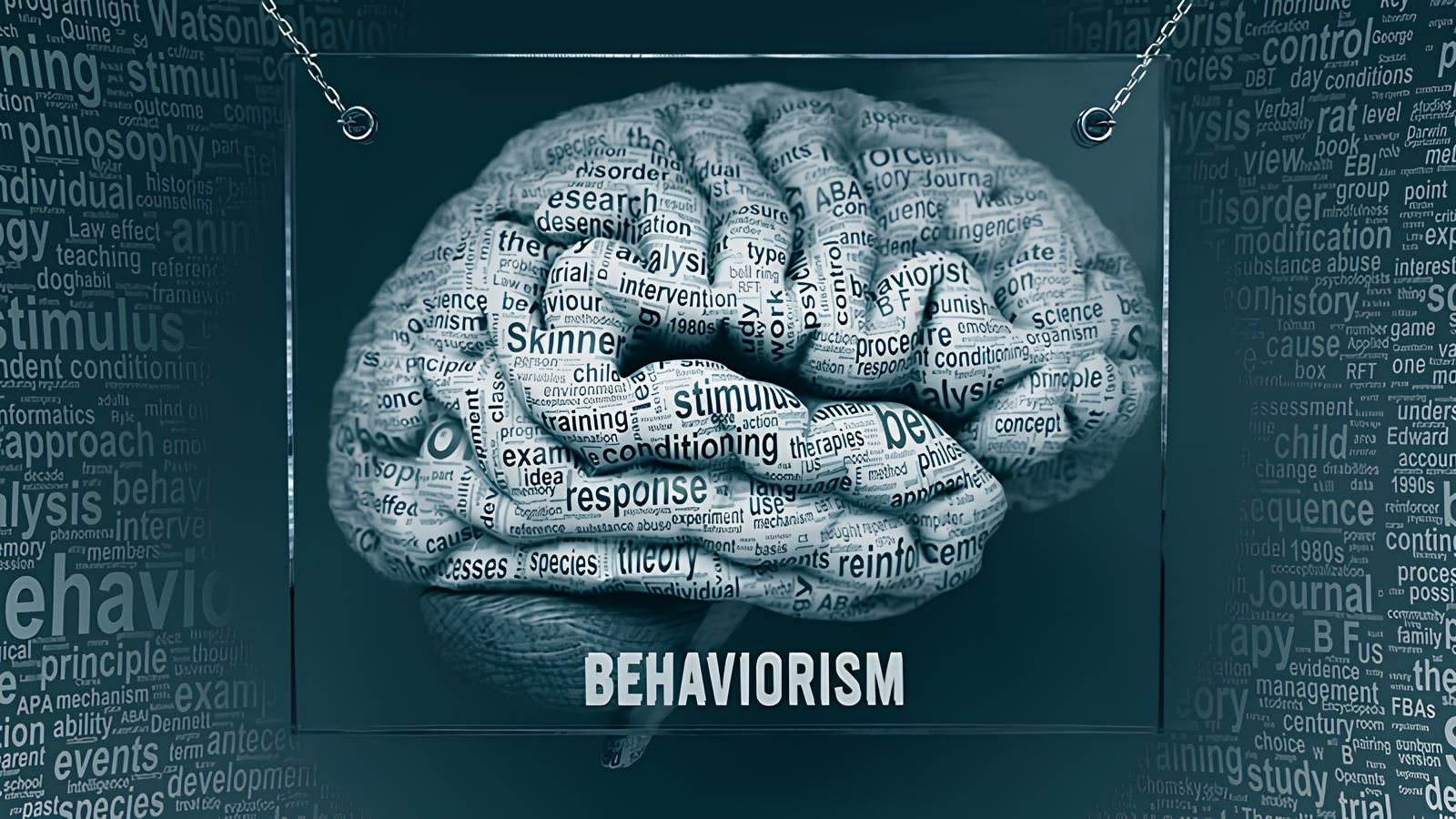What is Behaviorism?
Behaviorism is like a way of thinking about why we act the way we do. It's a belief that our actions are shaped by things around us — basically, by what happens to us in our environment.
Instead of focusing on feelings or thoughts, behaviorism looks only at what we can see and measure (like what people do or say). So, it’s about actions and how they are influenced by rewards and consequences.

Key Figures in Behaviorism
- John B. Watson – The Father of Behaviorism John B. Watson is known as the father of behaviorism. He believed that human behavior could be studied and changed by looking at what people do, rather than what they think or feel inside. Watson said that people learn how to act through experiences.
- F. Skinner – Learning Through Rewards and Punishments B.F. Skinner took Watson’s ideas even further. He introduced the idea of operant conditioning—learning through rewards and punishments. Skinner believed that if a person is rewarded for a good action, they are more likely to do it again.
- Pavlov’s Dogs – Learning by Association Before Watson and Skinner, there was Ivan Pavlov, a Russian scientist. He discovered classical conditioning through an experiment with dogs. He rang a bell every time he gave food to the dogs. Eventually, the dogs started to salivate just by hearing the bell, even when no food was given. This showed that animals (and people) can learn by association.
- Example: When the fire alarm sounds, crew members automatically know to take action. They’ve heard that sound during drills and emergencies, so they react without delay.
Life at sea involves teamwork, discipline, and routine — all of which can benefit from operant conditioning. Here’s how:
- Positive Reinforcement This means rewarding good behavior, so it continues. Example: If a crew member keeps the deck clean and is praised by the officer or given extra shore leave, they feel good and are more likely to continue doing it. These rewards don’t always have to be money or gifts. A simple “Well done” can motivate someone.
- Negative Reinforcement This means removing something unpleasant when the correct action is taken. Example: If a task is usually boring or uncomfortable, a sailor may decide to do it early to avoid being chased by a supervisor later. In this case, doing the task removes the stress or pressure — that’s negative reinforcement.
- Punishment This is when a consequence is given for bad behavior, to stop it from happening again. Example: If a seafarer ignores safety rules and is formally warned, they’ll think twice before repeating the mistake. Punishment is useful but must be fair and clear. Overusing it can cause stress and lower morale.
Behaviorism is not just one idea — it has different forms. The two main types are methodological behaviorism and radical behaviorism.
- Methodological Behaviorism This type was introduced by John B. Watson, the father of behaviorism. Methodological behaviorism focuses only on what we can see and measure — actions, not thoughts. Watson believed that the mind is like a “black box” — we can’t see inside it, so we shouldn’t guess what someone is thinking or feeling. Instead, we should study what they do.
- Radical Behaviorism This type was developed by F. Skinner, and it takes things a bit further. Skinner agreed that behavior is shaped by the environment, but he also believed that thoughts and feelings are important — they are just another form of behavior. Radical behaviorism says that even private experiences (like fear, motivation, or stress) are part of behavior and can be studied, even if they’re not visible.
Techniques for Building Positive Behavior
Changing behavior is not always easy, especially on a ship where teamwork, safety, and discipline matter every day. Here are some proven behavior-change methods used in behaviorism:
- Token Economies This technique uses small rewards (or “tokens”) to encourage good behavior. These tokens can later be exchanged for something valuable — like extra rest time, a small treat, or a special privilege.
- Time-Out Strategies Time-out doesn’t only apply to children — it’s also used in adult environments to reduce bad behavior by removing the person from a rewarding situation.
- Shaping Shaping is about encouraging small steps toward a bigger goal. You don’t wait for someone to get everything right at once — instead, you reward progress along the way.
Criticism of Behaviorism
While behaviorism has been very useful in understanding and shaping behavior, it is not without its limitations. One of the main criticisms is that behaviorism focuses only on actions that can be seen and measured, while ignoring thoughts, emotions, and personal experiences. This can be a problem, especially in high-stress environments like life at sea, where feelings such as fear, anxiety, or motivation can affect performance but may not always show through visible behavior. Another issue is that behaviorism may not work in every situation. People are complex, and what works for one person might not work for another. For example, a reward system may encourage one crew member but might not motivate someone else in the same way. In addition, not all actions are easily shaped by rewards or punishments. Some behaviors are deeply rooted in personality, past experiences, or emotional states, which behaviorism doesn’t fully explain. Because of this, relying only on behaviorist methods may lead to short-term results rather than lasting change. Understanding the limits of behaviorism is important for leaders and trainers at sea, so they can also consider emotions, communication, and personal needs when guiding behavior.
Why Should Seafarers Care About Behaviorism Theory?
Understanding behaviorism theory helps seafarers develop a better awareness of how actions and habits are formed and changed. This knowledge can lead to improved personal performance by encouraging consistent, goal-driven routines. It also supports stronger teamwork, as crew members become more mindful of how their behavior affects others and how positive habits can be encouraged within the group. Clearer communication is another benefit, as behaviorism encourages direct, action-based feedback that reduces misunderstandings. Overall, knowing the basics of behaviorism helps create a more disciplined, cooperative, and effective working environment at sea.
Conclusion
Behaviorism theory offers valuable insights into how actions and habits are learned and changed. For seafarers, understanding this theory helps improve individual performance, teamwork, and communication — all vital for life at sea. While it focuses on observable behavior, its practical tools can guide positive change and promote safety on board. Although behaviorism has its limits, combining its principles with awareness of feelings and thoughts creates a balanced approach to personal and professional growth. Overall, knowing behaviorism empowers seafarers to work better together and maintain a disciplined, efficient ship environment.




